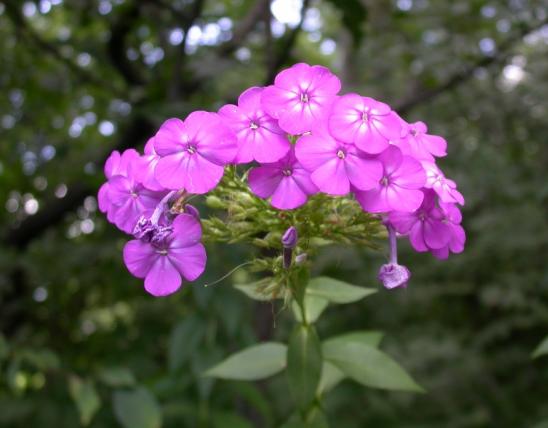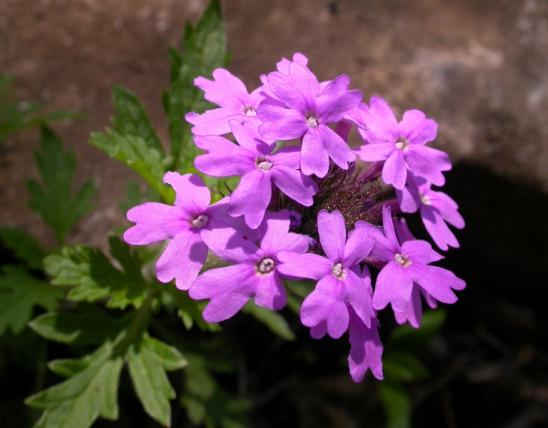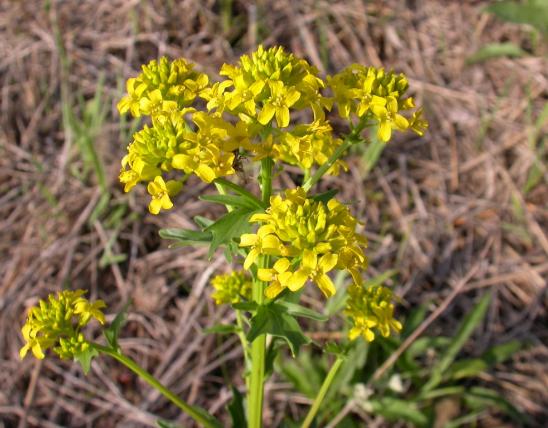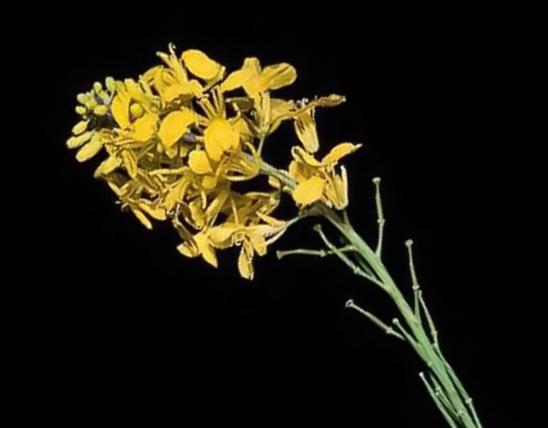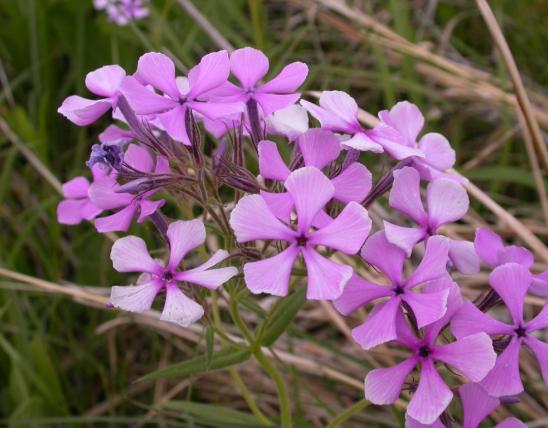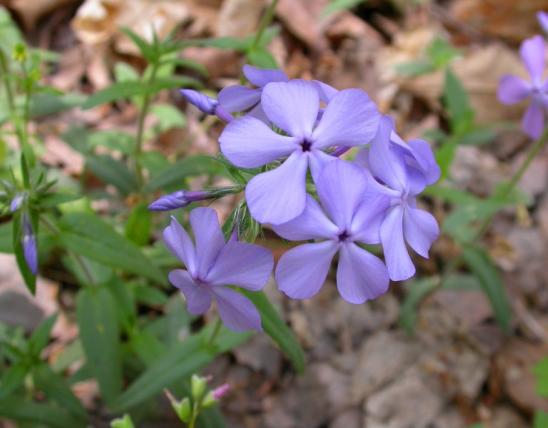
Dame’s rocket has showy, fragrant clusters of purple flowers that bloom atop waist-high stalks in April, May, and June. A native of Eurasia, this member of the mustard family was introduced to North America as a garden flower. It commonly escapes from cultivation.
Blooms April–June.
An herbaceous biennial or perennial that branches at the base into stout, hairy stalks 2 to 4 feet tall.
Leaves alternate, basal, to 8 inches long; lower leaves with leaf stems, upper leaves stalkless; lance-shaped to ovate-lance-shaped, hairy, the margins toothed.
Flowers in branching clusters, with older/spent flowers and developing fruits low on the stalk, and flower buds and younger flowers at the tips. Sepals 4; petals 4, not lobed, pink to purple, rarely white. The sepals and narrowed bases of the petals resemble a tube. Flowers fragrant, especially near dusk.
Fruits long, narrow capsules (siliques), to about 4 inches long, ascending or slightly curved upward, splitting lengthwise at maturity to release small seeds.
Similar species: At a glance, or from a distance, summer (or perennial phlox) can look similar. The 4-petaled flowers of dame’s rocket separate it from phlox, which has 5 petal lobes. With more practice, you’ll notice a difference in flower cluster shape, which is also visible from a distance; summer phlox has a more rounded, domed cluster shape, while dame’s rocket has narrower clusters.
Height: 2 to 4 feet.
Statewide. Introduced, widely scattered.
Habitat and Conservation
When growing out of cultivation, dame’s rocket usually occurs along railroads, roadsides, and other open, disturbed areas. Sometimes, its presence indicates an old, abandoned home site, where someone had cultivated it long ago.
Status
Nonnative, naturalized wildflower. Native to Europe. Often cultivated as a garden flower. Can be weedy. Some US states have declared it invasive.
Human Connections
Because this species is nonnative and weedy enough to be considered invasive in some states, we do not recommend cultivating this plant. Unfortunately, dame’s rocket seeds are included in some commercial “wildflower” seed mixes, which contributes to its spread on our continent.
People have played a role in distributing plants across the globe. It’s easy to see why this flower was popular in the gardens of yesteryear. Like daylilies, daffodils, everlasting pea, and nonnative bearded irises, this species is often visible at old home sites and along roadsides where introduced populations persist.
If you’re a plant nerd, you can easily see that this species is in the mustard family by its unique fruit form (the long, beanlike silique, same as on yellow rocket, black mustard, and many other common mustards) and its cruciferous, cross-shaped flowers: 4 petals, 4 sepals, and classic 6-stamen arrangement of 4 longer (outer) and 2 shorter (inner) stamens. If this is new to you, carefully pick apart a mustard flower (even from a bolted radish plant) and see for yourself.
The leaves, tender young shoots, flower buds, and flowers are considered edible, and many people enjoy eating them in various ways. Consult a trusted wild edibles resource for specific preparation techniques.
The genus name is from the Greek word hespera, which means “evening.” It’s applied to this genus because the fragrance of the flowers is most noticeable in the evening. In Greek mythology, Hesperus is the Evening Star personified as a deity. We now know that the so-called Evening Star is the planet Venus, when it is visible around sunset. Our words “vespers” and “west” are related to the original Greek word.
Ecosystem Connections
As a nonnative plant, this species does not belong in North America’s natural landscapes. Where it grows on our continent, it displaces native plants. Fortunately in Missouri, dame’s rocket does not seem to invade healthy native habitats; instead, it tends to be limited to disturbed habitats such as roadsides, railways, old fields, and pastures.
Being a member of the mustard family, it is eaten by a variety of insects that eat mustards, notably the cabbage white butterfly, which is also a nonnative species originally from Eurasia.
There are about 50 species in genus Hesperis; they are native to Eurasia and parts of northern Africa. None are native to North America.
































